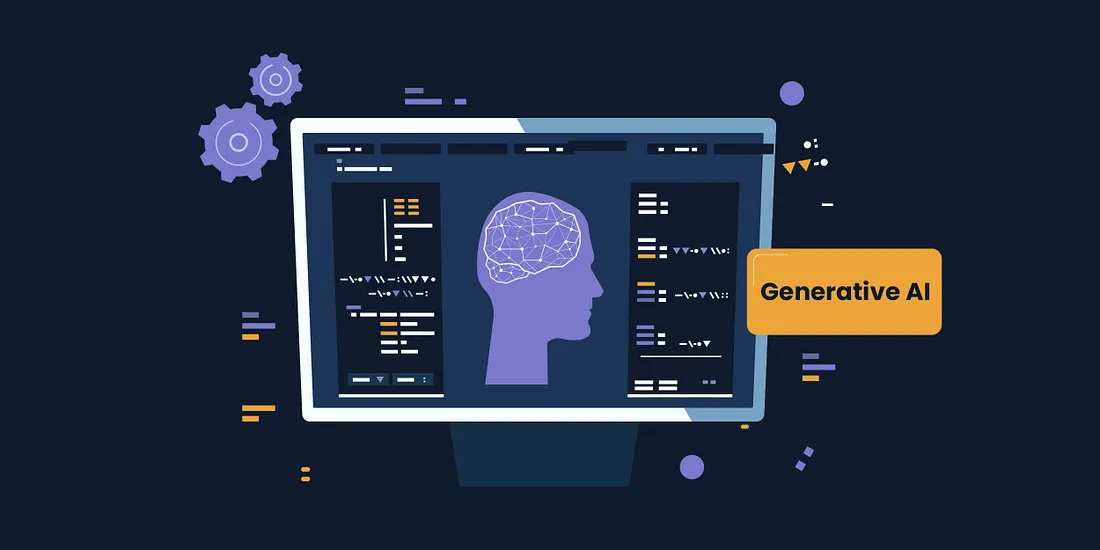
Today, it’s hard to miss all the excitement in technology space around ChatGPT, Stable Diffusion, and other forms of Generative AI — basically, an advanced version of Artificial Intelligence that can generate content that is indistinguishable from that generated by humans.
Generative AI, ladies, and gentlemen is the buzzword these days, and in this post, we are going to cover some of the basics of it such as:
- What is Generative AI?
- The technology behind Generative AI -How does Generative AI work?
- Applications of Generative AI
- Will Generative AI take my job away?
- Future of Generative AI
1. What is Generative AI?
This is a tough question to answer since the term has been a buzzword for a few months now after the launch of ChatGPT. Before that, we were already familiar with its infamous cousin, Artificial Intelligence.
When you use Artificial Intelligence to create new text, video, audio, images, or any form of data, you can classify this under Generative AI. This is an umbrella term.
Any time Artificial Intelligence is used to create something on its own, we call it Generative AI. For instance, there are websites like Midjourney that use prompts from users to generate entirely new images. Like this one:
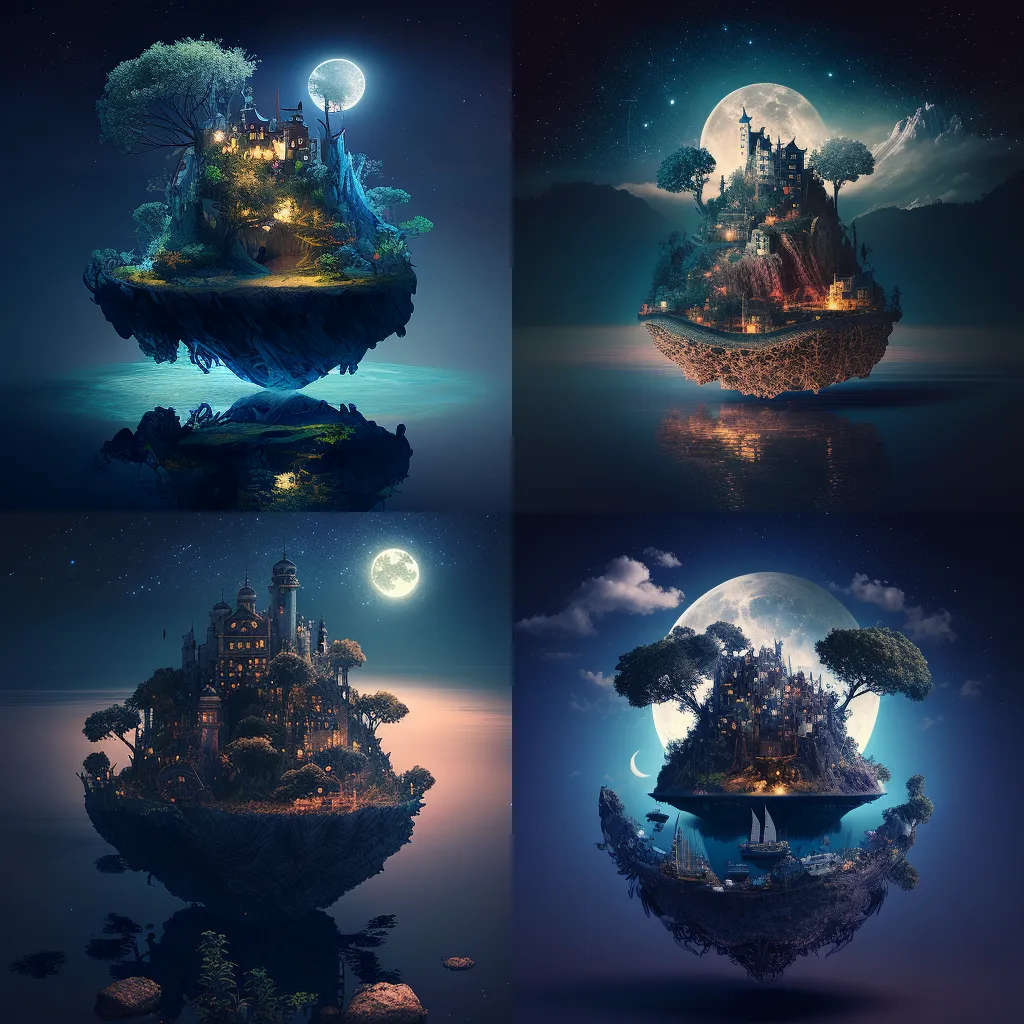
A user on the Midjourney platform who goes by the name Revanchist was asking for a “kingdom on a floating island, covered in magic lit up by the moonlight”
And the AI did the rest. Impressive, isn’t it?
So, in Technical terms, Generative AI refers to a type of artificial intelligence that is capable of generating new and original content, such as images, videos, music, or even text, without explicit instructions or guidance from humans.
ChatGPT, Midjourney, Stable Diffusion, and DALL-E, are just a handful of Generative AI tools that are out in the market today.
We have already seen how powerful ChatGPT can be. So now, what powers these Generative AI tools? Let’s take a look under the hood.
2. How does Generative AI Work?
Generative AI works by using complex algorithms to generate new and original content based on patterns and relationships learned from a large dataset. It usually uses unsupervised or semi-supervised learning to process large amounts of data and generate original outputs.
For example, if you want your AI to be able to paint like Van Gogh, you need to feed it as many paintings by this artist as possible.

Generative AI is powered by a neural network that has the ability to learn the unique characteristics or features of an artist’s style and then apply them when prompted. This process also applies to models that can generate texts, books, interior and fashion designs, non-existent landscapes, music, and more.
Some of the more common terms you need to be familiar with, if you want to understand how Generative AI works, are:
a. Variational AutoEncoders (VAE)
Variational AutoEncoders (VAE) is an Artificial Intelligence Algorithm that has two primary functions: encoding and decoding information. The VAE has the capability of reconstructing data and storing it in a “latent space,” which makes it a powerful tool. Through the use of Neural Networks, VAEs are capable of self-teaching and can convert input data to latent space and vice versa.
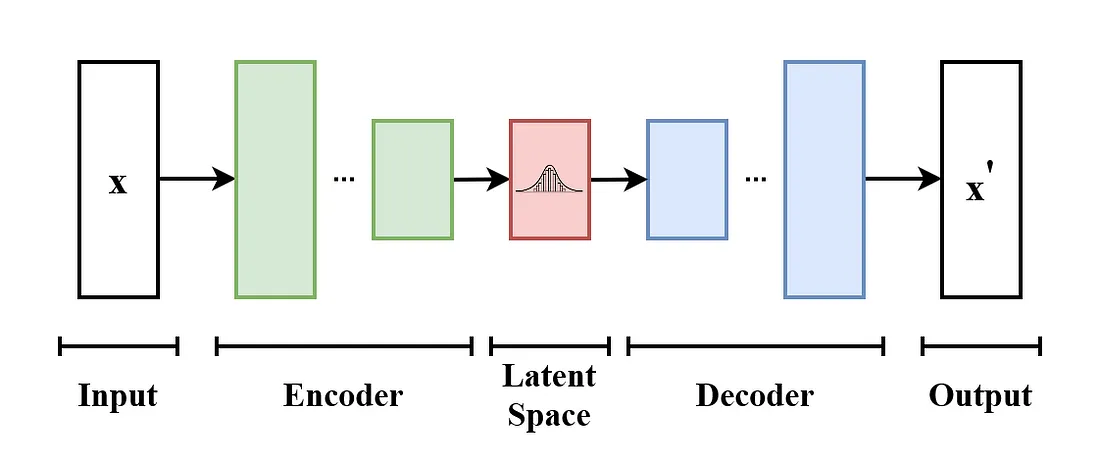
The model receives x as input. The encoder compresses it into the latent space. The decoder receives as input the information sampled from the latent space and produces as similar as possible to x.
b. Neural Networks
Neural networks are algorithms used in AI that excel in recognizing patterns in data. Similar to the human brain’s numerous neurons, a neural network comprises numerous small fictional units called nodes. These nodes are organized into layers, where information enters the input layer, progresses through the hidden layer, and ultimately leaves through the output layer.
Below is a visual representation of a neural network:
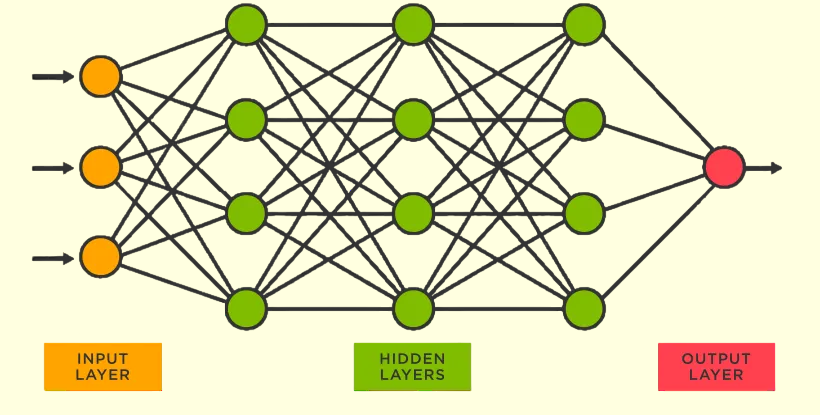
An artificial neural network in its most basic form has three layers of neurons. Information flows from one to the next, just as it does in the human brain:
- The Input Layer: the data’s entry point into the system
- The Hidden Layer: where the information gets processed
- The Output Layer: where the system decides how to proceed based on the data
More complex artificial neural networks will have multiple layers, some hidden.
c. Generative Adversarial Networks (GANs)
In simple terms, GANs are computer programs that are capable of producing new content such as images or music. The objective of GANs is to generate a novel and synthetic form of data that closely resembles data from the past. This is accomplished by having two sets of neural networks compete against each other in a zero-sum game.
A GAN has 2 parts, called a generator and a discriminator.
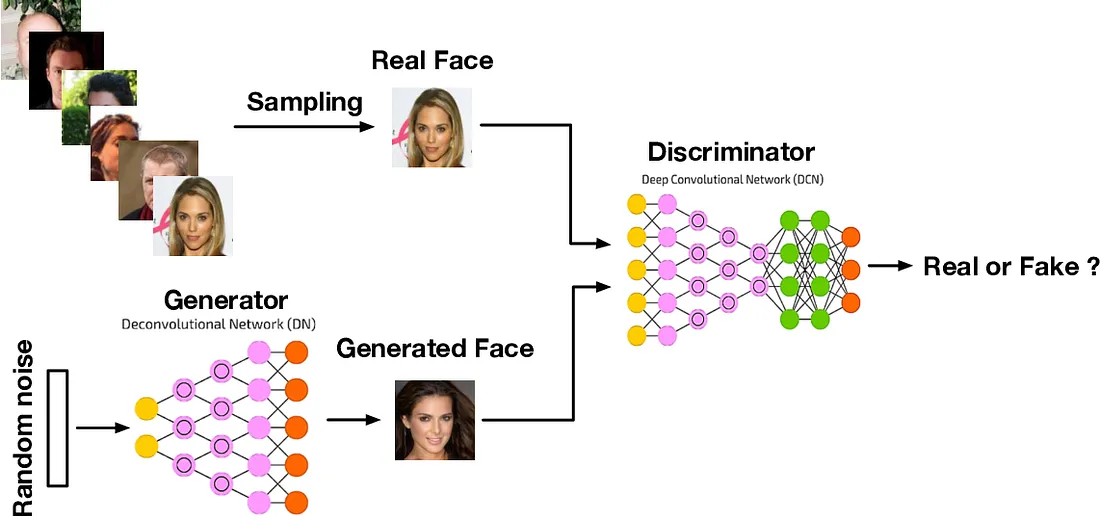
Imagine if you want to draw a picture of a puppy, but using the help of a GAN. The generator first draws an approximation of a puupy, which the discriminator tries to guess if it was made by the generator. If the discriminator guesses correctly, then the generator goes back to work, getting progressively better at drawing the picture.

We now know how powerful Generative AI is and also have a small idea of how it works. So where do we go from here? What are the use cases of Generative AI?
Let’s quickly take a look.
3. Applications of Generative AI
Generative AI can create a variety of content. This much we know. But there are other, lesser-known fields where Generative AI will be a powerful disruptor. Here are some of them:
i. Game Development and Movies
CGIs are a lucrative industry worth billions of dollars, and Generative AI offers a distinct use case. Generative AI allows for the generation of new videos and images without any existing material. It combines the creativity of a 3D animator with the storytelling abilities of a scriptwriter into one powerful computer program, providing limitless possibilities. This is what Generative AI can offer.
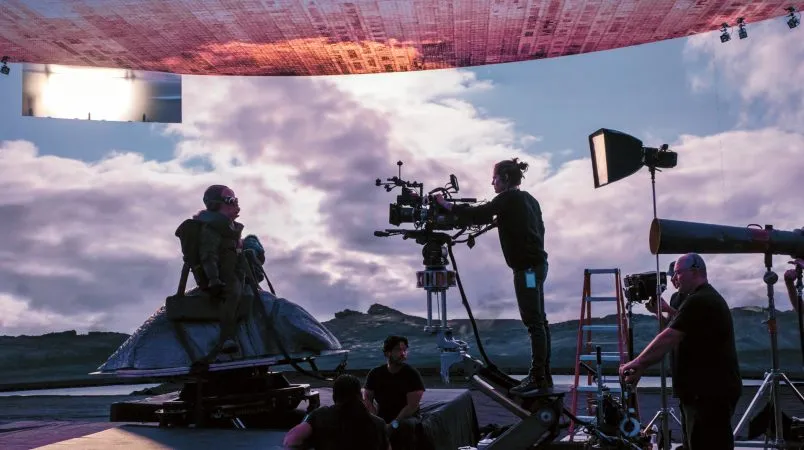
ii. Content Creation / Text Generation
Composing product descriptions is a task that can be quite monotonous and time-consuming for any writer. However, it’s something that can be easily accomplished by a machine. The creators of GPT-3 have fulfilled this need by developing a potent AI tool that can produce large amounts of text from a brief prompt. GPT-3’s output is so impressive that content moderators have difficulty distinguishing between text written by a human and that generated by the AI.
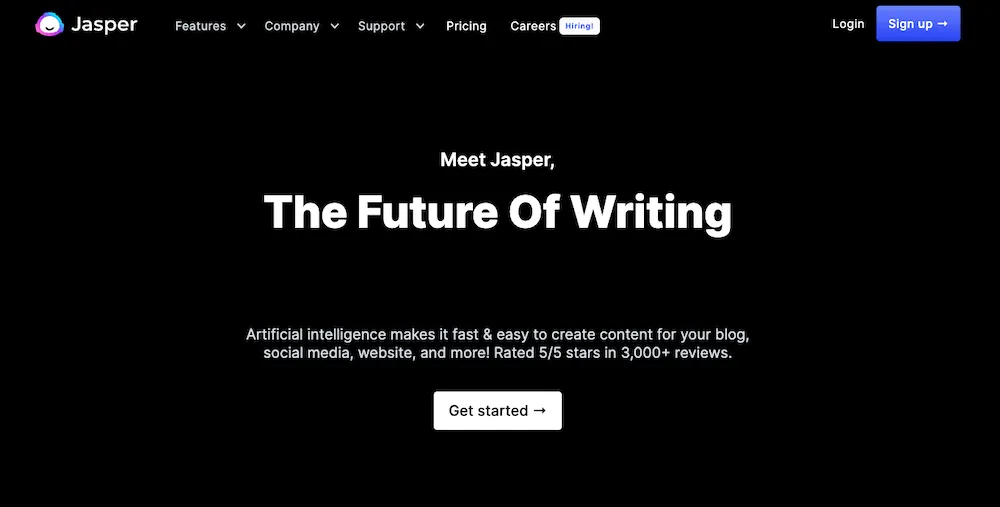
iii. Medicine
It is possible to train powerful AI models to generate drug compounds or new molecules with specific properties, which can be beneficial in drug discovery and development.
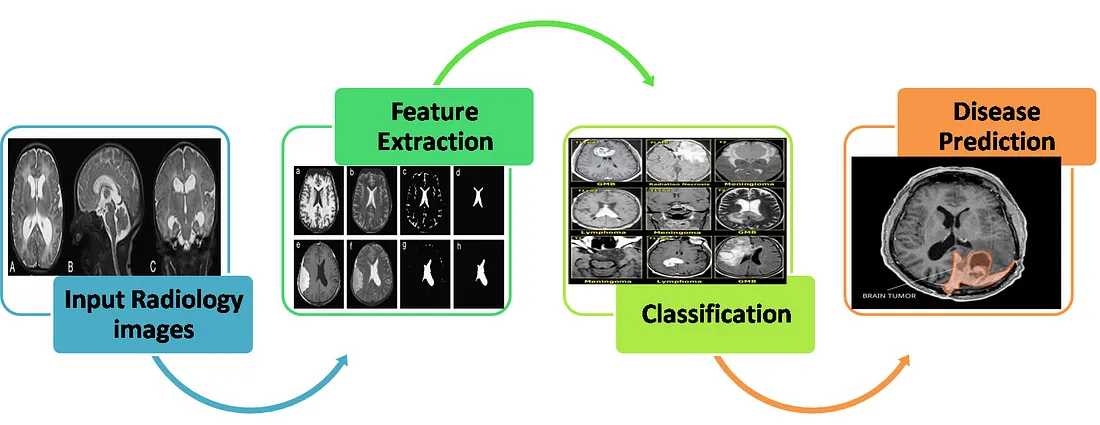
This approach can reduce the time required for research from years to a few days or even hours. In fact, AI technology played a crucial role in helping the pharmaceutical company Moderna develop a vaccine for the Coronavirus pandemic.
iv. Advertising
Generative AI can be utilized to generate remarkable images, as previously demonstrated. These images are improving continuously, and in many cases, it’s challenging to distinguish between artwork created by a human and that produced by a machine. This technique can enable smaller agencies to generate original artwork, which was previously only possible for teams with significant financial resources.
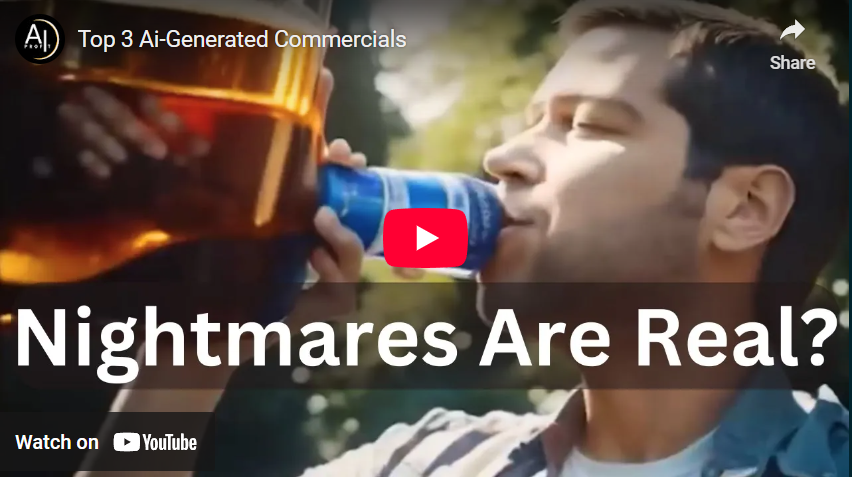
4. Will Generative AI take my job away?
When ChatGPT was released with great excitement in November 2022, it caused widespread panic.
Numerous sources, including YouTube videos, LinkedIn posts, Instagram Stories, and even some doomsday prophets, claimed that the era of content creation and copywriting had come to an end.
But wait, HOLD YOUR HORSES!!

The emergence of generative AI tools like ChatGPT should not be feared as they are unlikely to replace human workers. Instead, they can help increase efficiency.
Generative AI excels at tasks that involve pattern recognition and prediction, especially in the field of Natural Language Processing (NLP). Repetitive tasks, like crafting product descriptions, are the ideal candidates for automation using Generative AI.
It is possible to view generative AI as the next advancement in the evolution of Conversational AI.
The use of generative AI is increasingly becoming popular in data analysis. This technology allows knowledge workers to optimize their time, freeing them up to gain deeper and more insightful knowledge from the data they’re analyzing.
5. The Future of Generative AI
As I am writing this, many companies worldwide are in a competitive rush to incorporate Generative AI technology in their respective products.
Recently, Google released its own AI chatbot named Google Gemini, which serves as an alternative to ChatGPT. Bard has comparable features to ChatGPT and utilizes Google’s LaMDA (Language Model for Dialogue Applications) technology.

Like other companies, Microsoft is also keeping pace with the search race. Having invested billions of dollars in the company that developed ChatGPT, Microsoft has already started sending invitations to users for their ChatGPT-powered search engine, Bing.
The potential areas in which Generative AI can be utilized are expanding every day, and it is truly impressive. We cannot simply dismiss Generative AI but must learn to coexist with it.
As Stephen Hawking once stated, “Intelligence is the ability to adapt to change.”
Thank you for taking the time to read. This is just the beginning of writing my first article. I hope you enjoyed reading it. I assume this article has provided valuable insights and sparked your curiosity about the future of artificial intelligence. Stay tuned for more thought-provoking content and exciting advancements in the field.
Keep Exploring, Keep Learning, and Keep Embracing the possibilities of AI!
Follow me on my socials!